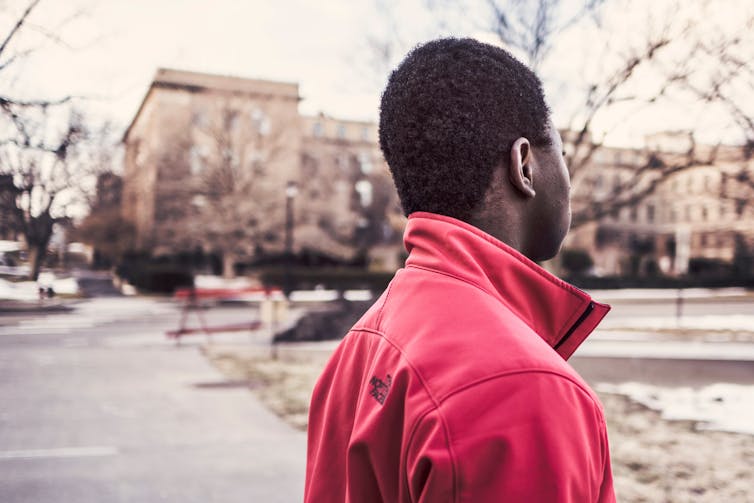
Pexels
Having a student body that is representative of wider society has been high on many universities’ agendas for quite some time. Yet recent UCAS data shows the gap between disadvantaged and non-disadvantaged students, particularly those studying at “top” Russell Group universities, has recently widened.
The picture is mixed across higher education as a whole. The number of Scottish students from deprived areas increased in 2018, as did the number of black students.
Yet the widening of the gap at elite institutions is concerning – particularly given the dominance of Russell Group universities in key areas of public life such as politics and the legal system.
It would be unreasonable to suggest this gap in educational attainment is the sole responsibility of universities. After all, educational inequality takes root before children even begin primary school. And universities are making efforts to address the gap. Most university websites provide details of widening participation schemes and bursaries. But how effective are these schemes? And are there factors that they are failing to take into account?
The problem with aspirations
A cursory glance at schemes designed to widen participation in education at university level reveals an oft-repeated phrase: “raising aspirations”. This seems intuitive enough - if young people lack confidence and opportunities, it follows that they will be less ambitious than their more advantaged peers.
Yet researchers have questioned the usefulness of raising aspirations in expanding access to higher education. A 2011 report published by the Joseph Rowntree foundation found that “it is not correct to characterise deprived neighbourhoods as places where aspirations are always low”. The fact is that young people from disadvantaged backgrounds have plenty of aspirations for the future but lack the resources to achieve them.

Although well meaning, a narrow focus on aspiration risks framing disadvantaged students as somehow lacking and blaming difficult circumstances on their own aspirational deficits. There is also the risk of assuming that academic paths are always the right ones, and that vocational or manual jobs are less aspirational. Most fundamentally, a focus on aspiration can prevent a reckoning with systemic social and economic inequalities that limit young people’s options and which cannot be easily overcome by individuals.
Systemic barriers
Students involved in Widening Participation schemes are a diverse group – including adult learners, minority ethnic groups, care leavers, and students with disabilities. This shows how obstacles to university can vary.
However, key themes pop up again and again. Money is among the most obvious. The scrapping of maintenance grants in favour of repayable loans in 2016 means that poor students now face a higher debt burden than their more privileged counterparts, who are more likely to receive financial assistance from family members.
Then there are geographic factors: disadvantaged students in London are more likely to attend university than their northern counterparts. Disadvantaged students also receive less guidance and support in school regarding higher education and careers. None of these factors relate to aspiration, but all can profoundly impact the opportunities available to disadvantaged students.

There are also cultural barriers. Universities with a predominantly middle-class student intake can exclude students who do not fit that category, consciously or otherwise. When I worked with students in Leeds participating in the now-defunct Aimhigher scheme, a common question was whether they would be mocked for their accents.
Working-class students describe being labelled as a “box-ticking exercise” by middle-class peers and being made to feel ashamed for the way they dress. These feelings of not fitting in can be harder to pin down than concrete barriers such as debt or a lack of career guidance, but may also contribute to the higher drop-out rate among students from disadvantaged backgrounds.
Institutional change
Focusing on individual aspiration rather than systemic barriers to higher education can lead to the burden of change being placed onto disadvantaged students rather than institutions themselves. But for widening participation to be effective, universities must consider how their own institutional cultures can change to accommodate a more diverse student body.
In academic terms this might mean expanding the curriculum to include previously neglected perspectives. Practically it might mean offering accommodation to some students without asking for a guarantor. Or institutions might offer a free foundation year for students from disadvantaged backgrounds who do not have the required grades but show academic potential.
Where institutions will not change willingly, pressure must be brought. This was highlighted in the recent threat of legal action against universities imposing academic sanctions upon students who fall into rent arrears – a policy which would further disadvantage poor students.
Ultimately though, when it comes to widening participation there is no magic bullet. And many universities are genuinely committed to expanding access. But while campus visits and “aspiration-raising” activities are no doubt useful, universities should be aware that the primary barriers to higher education do not always lie with disadvantaged students. Instead deep-rooted economic and social inequalities can play a major role. And these are barriers that can only be addressed through social and institutional change.
Francesca Roe, Research and Evaluation Officer, University of Leeds
This article is republished from The Conversation under a Creative Commons license. Read the original article.
No comments:
Post a Comment